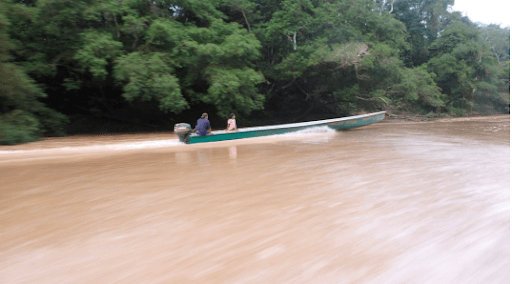HEALTH SYSTEMS AND SERVICE DELIVERY IN THE REGION

Cononaco River, Yasuni Park, Ecuador. Photo: Enrique Vela
Long distances
Limited health care infrastructure and travel difficulties constrain indigenous health care
In the case of government health systems in the Amazonian border regions, indigenous peoples present a certain degree of vulnerability in terms of access to health services in all locations studied. In some of them, such as Colombia, Bolivia, and Peru, for example, we observed the absence of primary care services offered within the indigenous territories. In addition to the indigenous population having to travel long distances to the nearest health center, there is no proper follow-up of primary care actions, such as prenatal care or immunization.
The characteristics of the health network show the predominance of first and second level services, with no high complexity infrastructure in most regions. The only exceptions are when these regions coincide with the departmental capital, as is the case of Leticia in Colombia and Iquitos in Peru. Generally, when the indigenous population needs these services, they travel to large urban centers or even to the capital of the country. In the case of Guyana and Suriname, the most complex services are restricted to their national capitals of Saint George and Paramaribo, respectively. Due to these characteristics, some countries adopt specialized itinerant health programs in which specialized doctors go to the indigenous territories sporadically to perform consultations, exams, or even minor surgeries.
The availability of health professionals is considered a serious problem in all the areas studied. Generally, health facilities rely only on nursing technicians and health agents. The figure of agents or community health promoters are part of the primary care policy in almost all countries, with the exception of Suriname. These professionals perform voluntary or paid health promotion and disease prevention activities. In many cases, there are training programs for them to conduct home visits to pregnant women and to notify cases that require the support of other health professionals.
Finally, it is worth mentioning that the framework of interculturality is present in the health legislation of the member countries, but there has been little progress regarding its application. Brazil, for example, has an indigenous health subsystem that can attend even the most distant populations; however, it is centered on the biomedical model. Guyana, on the other hand, has collegiate managers who count on the participation of indigenous people, but there is not yet a built intercultural system. Colombia has robust legislation that establishes the differentiated approach and interculturalism as one of the principles of its health system, but in the regions studied the model is still under discussion.
MAPA INTERATIVO
Observe no mapa interativo do Módulo Povos Indígenas, onde se localizam os territórios indígenas na região amazônica e observe as regiões fronteiriças estudadas pelos consultores da OTCA:
